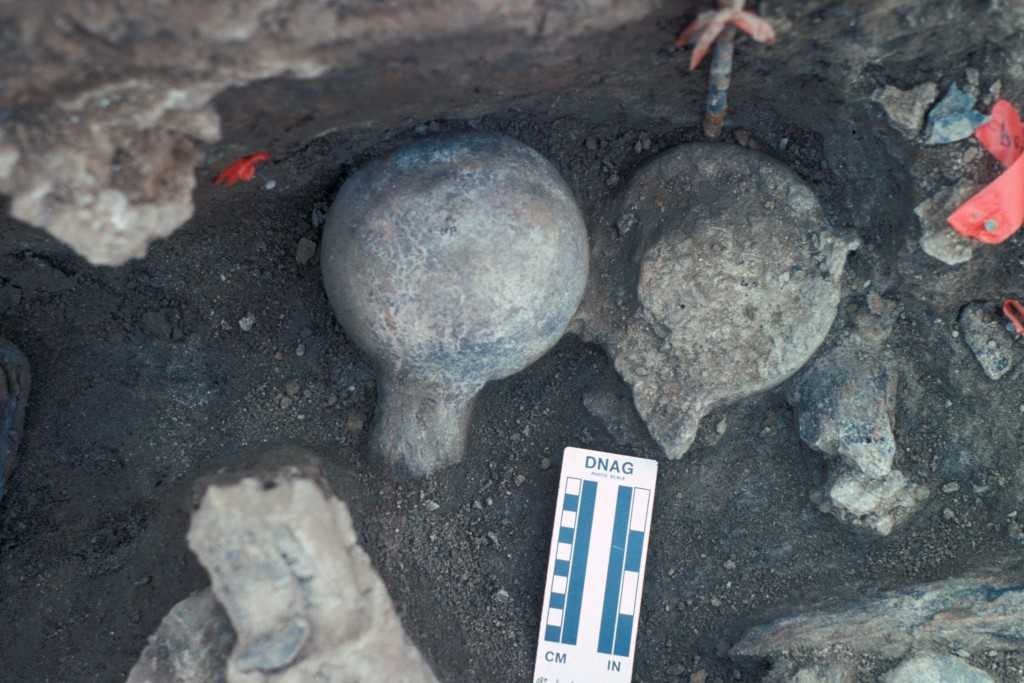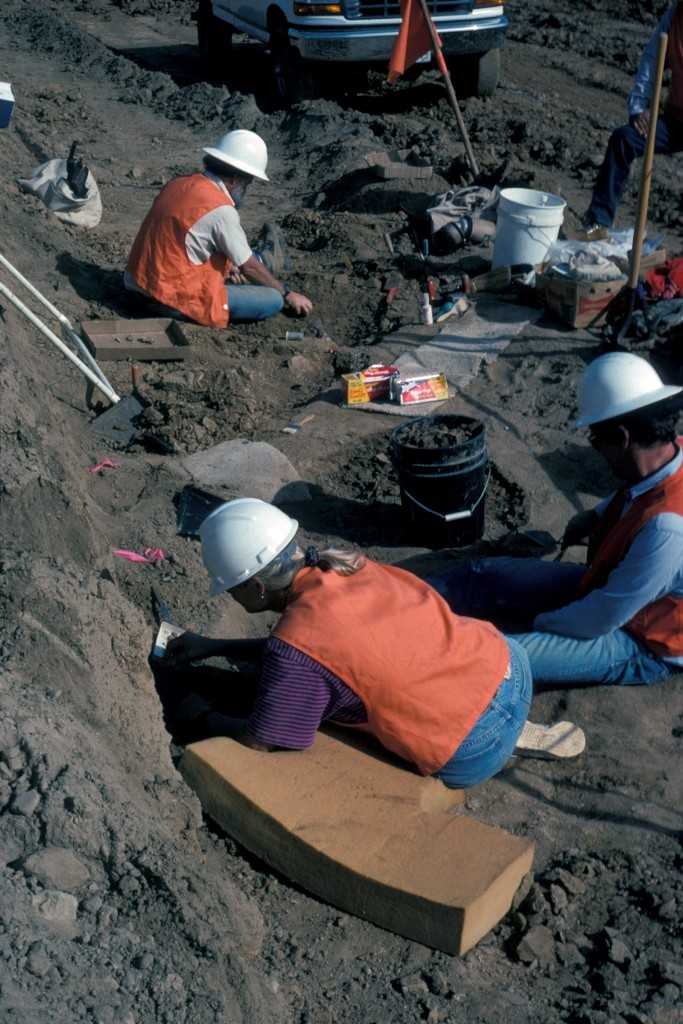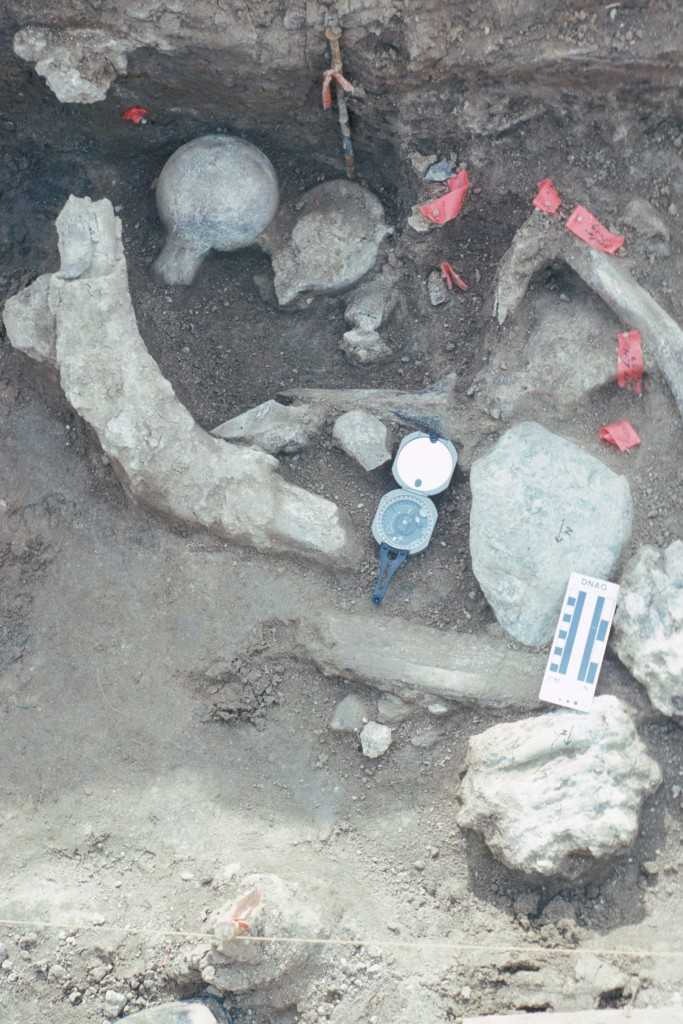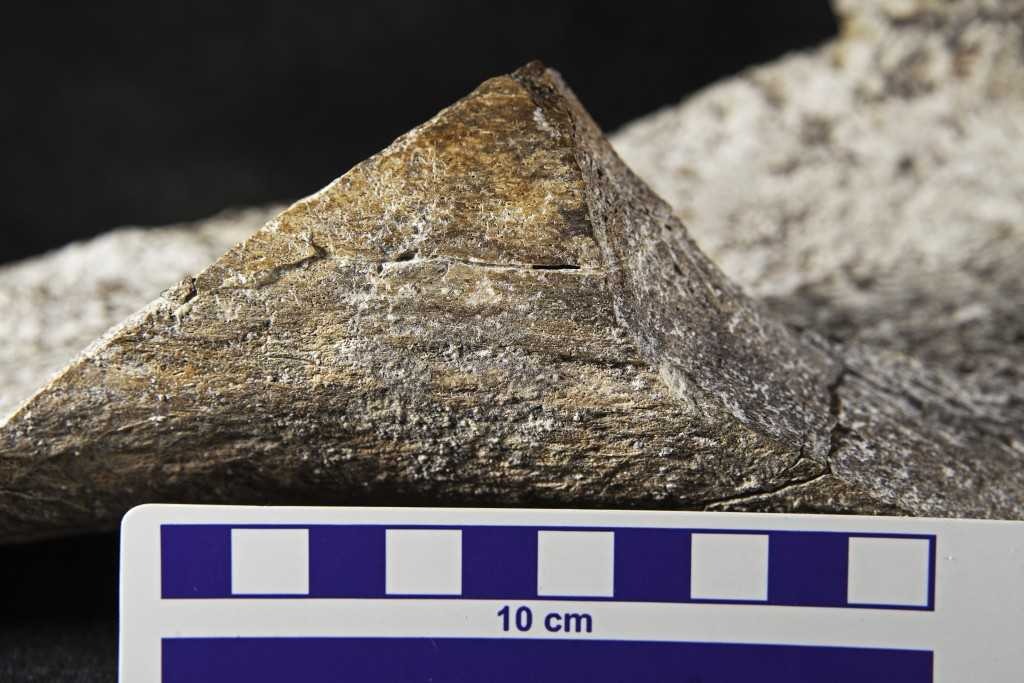The California coast has a history of yielding scientific treasures due to its fossil-laced land. During a freeway renovation in Southern California in 1992, archaeologists unearthed an extraordinary discovery buried beneath a sound berm next to the San Diego freeway. They stumbled upon a collection of ancient bones including the skeletal remains of a male mastodon, which they found most intriguing.
Upon digging approximately three meters below the construction site, Steve Holen, an archaeologist from the Center for American Paleolithic Research, discovered a layer of soil that had remained undisturbed for thousands of years. James Paces, a research geologist at the United States Geological Survey; and Richard Fullagar, an archaeologist at the University of Wollongong in Australia, were among his team members.
Among the findings was an abandoned campsite with stone tools and mastodon bones, which is not uncommon given that humans were known to have hunted mastodons in the Americas as early as 15,000 years ago.

Two mastodon femur balls, one face up and one face down, are among the remains found at the Cerutti site in San Diego. Credit: San Diego Natural History Museum
In 2017, researchers announced a discovery that is likely to generate a significant amount of controversy: they claimed to detect evidence of prehistoric humans in California dating back 120,000 to 140,000 years, more than 100,000 years before humans were thought to exist anywhere in the Americas. (Source)
Study leader Tom Deméré, the paleontologist at the San Diego Natural History Museum said: “I realize that 130,000 years is a really old date and makes our site the oldest archaeological site in the Americas.” Researchers discovered something remarkable at a site they dubbed “Cerutti Mastodon.”
Paleontologists working at the site discovered two tusks, three molars, 16 ribs, and over 300 bone pieces, among other mastodon remnants. It appeared to be a perfectly preserved workshop, where ancient tools were made. There were flat rocks called “anvils,” surrounded by smaller rocks that were used as hammers. Along with those tools, there were shattered mastodon bones and teeth, which were crushed in a way that only a human with a stone tool could have done.
Deméré and his team asserted that their findings, which include a mastodon skeleton, bone fragments, and multiple sizable stones, indicate that the location was utilized as a “bone quarry.”
Humans in California 130,000 years ago

Caltrans archaeologists Karen Crafts, Chris White, and Don Laylander excavating fossils found at the Cerutti Mastodon site off State Route 54 in San Diego. Image credit: San Diego Natural History Museum

A concentration of fossil bone and rock. Image credit: San Diego Natural History Museum
According to them, an unknown hominin used stone hammers to break open fresh mastodon bones, potentially to extract the marrow or harvest materials from the skeleton.
The researchers argue that if the bones had been disturbed by animals or some natural disaster, they would all have been damaged in the same way. But that is not what they found. The site, therefore, strongly suggests that humans were present and actively working on the mastodon bones. This finding could have a significant impact on our understanding of how and when humans first arrived in the Americas.
As some members of the team were breaking apart elephant bones, others were trying to determine the age of the Cerutti mastodon bones. Because the bones lacked collagen that contained carbon, radiocarbon dating was not successful. Consequently, scientists turned to uranium-thorium dating, which is a technique often utilized to verify radiocarbon dates.
This method of dating, which can be applied to carbonate sediments, bones, and teeth, enables scientists to determine the age of objects much older than the 50,000-year limit imposed by radiocarbon dating. Using uranium-thorium dating, scientists were able to estimate that the Cerutti bones were approximately 130,000 years old.
Holen, who first discovered the 130,000-year-old Cerutti Mastodon site, said he was prepared for the skepticism. “I think we’ve made a very good case that this is an archaeological site,” says Holen. “I think we’re quite prepared for the firestorm that’s coming.”
At a press conference, Holen said that he and his colleagues had found other sites dating back to 30,000 years ago in the American Great Plains. Even though some people might disagree, he thinks that a recent discovery supports the idea that our early ancestors had lived in the Americas long before most people left Africa.
Currently, scientists believe that humans migrated from Asia to the Americas between 12,000-20,000 years ago multiple times. Some came by boat along the coastal ecosystems, and others potentially walked through Beringia or the Bering Land Bridge after the retreat of the ice sheets covering Canada and the northern US.

A close-up view of a spirally fractured mastodon femur bone from the site. Image credit: San Diego Natural History Museum
This discovery made an associate professor of anthropology at the University of Wisconsin–Madison named John Hawks speechless. He told Ars Technica: “I’m not usually at a loss for words, but this one has left me and many of my friends speechless.”
The identity of the humans who migrated to the Americas and transformed a mastodon into bone tools remains a mystery. Hawks says:
“The key question is, which hominin population had the ability to establish a sustained population in Beringia? We don’t even know how many populations were in mainland Asia at the time—certainly multiple, deeply divergent populations of Denisovans and Neanderthals, maybe others with even older origins. Maybe modern humans. From the biological side, we have no reason to think that any of them were incapable of entering the New World. We’ve just been stuck with the assumption that they didn’t cross into North America—because if they did, we should see a hundred millennia of discarded tools and butchered animal bones.”
Researchers believe that these ancient humans, whoever they may have been, either crossed the Bering land bridge or sailed along the coast to arrive in North America. Studies suggest that early populations in other regions of the world may have also been able to navigate waterways.
Heather Pringle, reporting for National Geographic, notes that archaeologists have uncovered hand axes dating back at least 130,000 years on the island of Crete, which has been surrounded by the ocean for nearly five million years.
The research team intends to search for more archaeological sites and reassess collections of artifacts that could contain unexpected evidence of human activity in the future. Given the probable small population size of any North American wanderers 130,000 years ago, the discovery of human remains is unlikely, though not impossible.
Leave a Reply